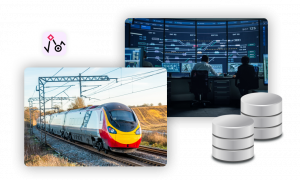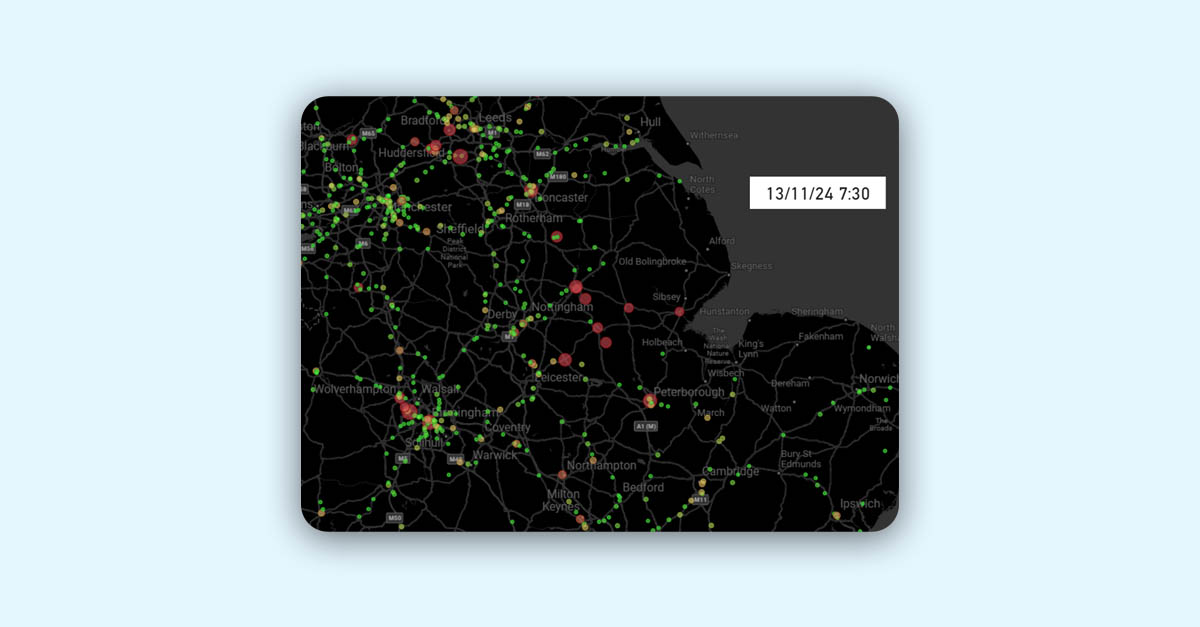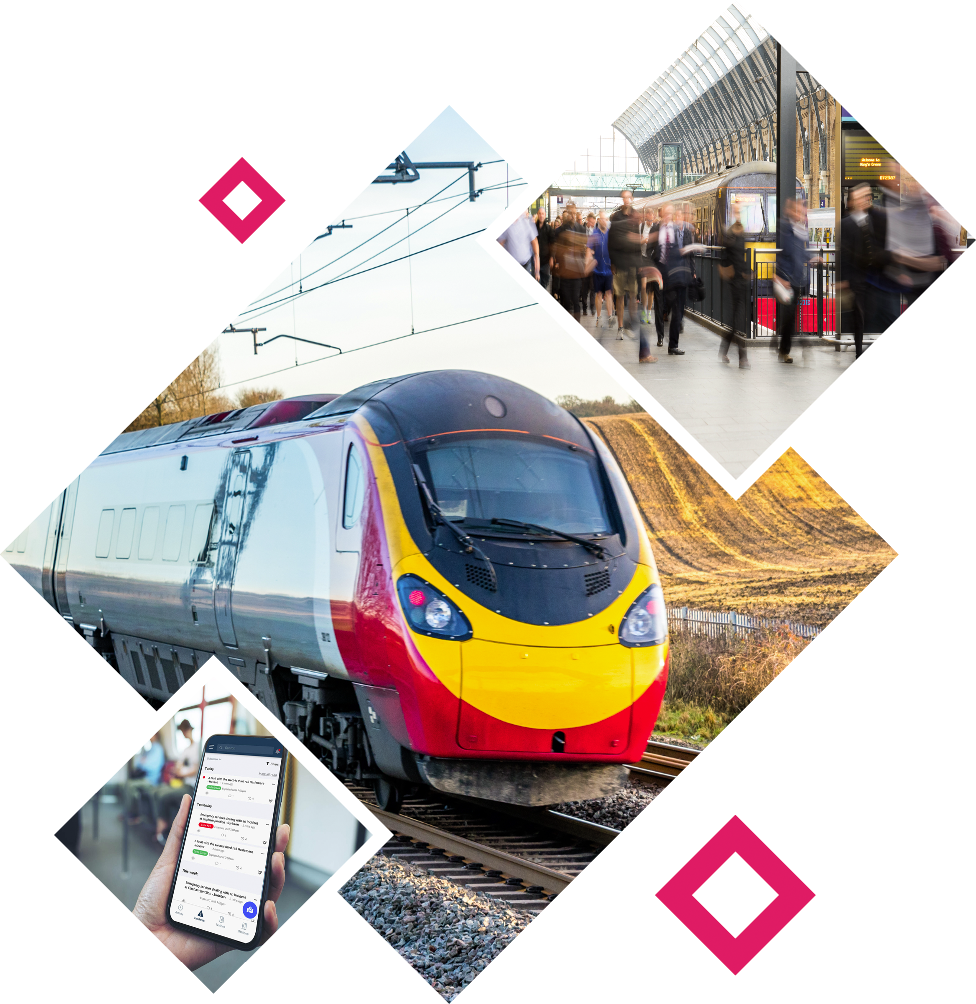It’s like TomTom for trains

Post incident service recovery through more accurate delay predictions
In the normal functioning of a railway network, disruption is an inevitable part of operations. Events such as trespass, signal failures and flooding can occur at any time, but what distinguishes a strong from a weak response is the reaction of the control centre to these issues. We can inform these actions through accurate delay predictions, equipping network staff with up-to-date, responsive information so they can take the most appropriate steps to remedy the situation.
When railway operators can realistically assess the magnitude and duration of a disruption, they make better decisions, such as restoring the timetable, reallocating crews, and keeping passengers informed. Better predictions, therefore, lead to better performance.

-
Avoiding over-regulation or under-regulation
When a serious incident occurs, the standard timetable suffers equally. For a time, services will be significantly affected and must be actively managed by the control centre staff.
This requires a fine balance, under-predicting delay duration leads to cancelling services close to the time, recalculating decisions multiple times and causing frustration amongst passengers. Over-predicting leads to decisions that are not appropriate, take valuable staff away from other tasks and can also mean passengers miss their trains. As we approach the end of the service day we also have to consider getting stock & crew home to where they are needed for the next day. Accuracy is therefore paramount!
Whilst we can’t change the fundamentals of a given incident, we don’t want to make the wrong decisions. Making a better estimate of the incident duration, from an accurate and comprehensive view of similar historic incidents, can mitigate this.
As academic studies suggest, controllers who make either overly optimistic or overly pessimistic assumptions about disruption length risk compounding the issue. Predictive tools help cut through the uncertainty, turning reactive management into proactive strategy.
-
Smarter Stock and Crew Decisions
A major disruption has a knock-on effect beyond its impact on passengers, sending shocks throughout the network and disrupting the finely tuned stock and crew diagrams/schedules. Train units and staff are expected to step through services in sequence. If one or both of those might not arrive on time to form their next service, any problems compound into major problems further down the line.
Accurate delay predictions help control teams have confidence that stock or crew will or will not arrive where they need to in time. For instance, if a train due to form the next departure is stuck 40 minutes behind schedule, operators can make a decision early: reallocate a spare train, delay the next service with clear communication, or adjust the route.
You can have the best customer service teams and elite software, but if your predictions are inaccurate and uncertain, you will lack the fundamentals to make vital decisions such as whether to cancel or run a service.
Diagram modifications, relief crew deployment, and tactical train formations all depend on knowing whether delayed units are likely to arrive in time.
-
More Effective Passenger Communication
As passengers we know that trains get delayed, especially on an ageing network. What frustrates us most isn’t the delay—it’s not knowing what’s going on. According to the National Rail Passenger Survey, fewer than half of delayed passengers feel they’re given clear, timely information during incidents.
This perception gap is partly due to inconsistent or vague delay updates. Accurate forecasts enable honest, detailed information – namely what’s gone wrong, how long it’s likely to last, and what alternatives are available.
Transport Focus research highlights that passengers rate ‘disruption handling’ far higher when updates are fast, clear, and realistic. We erode confidence with inaccurate delay estimates, especially if passengers feel information is being withheld or sugar-coated.
With digital channels now central to journey planning, providing consistent delay estimates across apps, displays, and announcements is key. That consistency starts with prediction systems that Control can trust and them being able to cascade that efficiently without adding to their workload right when they are busiest.
Why It Pays to Aim Higher
For operators, the benefits of better delay prediction go beyond technical efficiency. Accurate forecasting improves punctuality and reduces knock-on effects, helping services return to normal faster. It also prevents unnecessary cancellations due to misaligned crew or stock, drastically reducing your PfPI costs and improving performance scores.
For passengers, better delay communication improves trust—even when things go wrong. Consistent, realistic updates make all the difference. It’s an industry opportunity, regardless of whose post-box the Delay Attribution bill is landing in.
In a world of fine-tuning performance, it’s time to stop treating data and software as a tick box and look at the quality of what we’re using.
JNCTION have an unrivalled view of historic rail traffic jams and incurred delay profiles which allow us to predict knock-ons and forecast delays clearing. If you’re interested in product sheets for JNCTION Rail Traffic and JNCTION Location Performance Measure, please get in touch.
Click here to read more about how JNCTION are revolutionising the world of delay predictions using the JNCTION Archive and JNCTION LiveData. Or click here to read more about our control room software JNCTION Control, where you can get enhanced delay predictions integrated directly.
 Alex Clark, Head of Consulting
Alex Clark, Head of Consulting
Further Information
For consulting enquiries, contact Alex Clark at alex.clark@jnction.co.uk
To find out more about JNCTION’s products and services, visit www.jnction.uk



